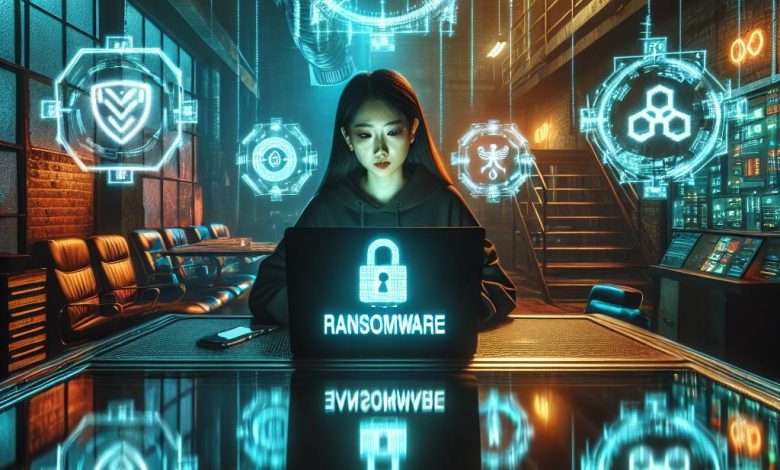
Table of Contents
Ransomware Attack on Kraft Heinz
In a notable cybersecurity incident, the food industry behemoth Kraft Heinz became the target of a ransomware group. This unsettling discovery has put the multinational company, known for its extensive portfolio of consumer food products, on alert.
Snatch Ransomware Group Claims Attack
A known malevolent entity in the cyber landscape, the Snatch ransomware group, has purportedly penetrated the defenses of Kraft Heinz. The group, which has previously made headlines for its illicit activities, took to its website to announce the breach of Kraft Heinz's systems. The declaration of the ransomware attack has raised concerns about the potential implications for the food giant's data security protocols and overall cybersecurity posture.
Post on Ransomware Group’s Website Indicates Old Attack Date
The information on the Snatch group's website presented an unusual twist, as the post detailing their claim bore a date that suggested the attack occurred well in the past. Dated August 16, but only disclosed publicly on December 14, it hinted that the cyber intrusion was not a recent event. This discrepancy in dates raises questions about the timeline of the attack and the series of events that led to its eventual disclosure.
Attack Allegedly Targeted Decommissioned Marketing Site
Further adding to the complexity of this cybersecurity concern, Kraft Heinz reports that the attack seems to have been directed at a non-operational marketing site. According to communications from the food company, this site had already been decommissioned and was housed externally, away from Kraft Heinz's central systems. These circumstances suggest a potentially less severe impact than if an active critical part of their digital infrastructure had been compromised.
Kraft Heinz Statement on Their Investigation and Current System Status
Kraft Heinz has responded to the alleged cyberattack with due diligence, undertaking an investigation to substantiate the claims made by the Snatch ransomware group. In a statement, the company reassured its stakeholders that, contrary to the assertions of the cybercriminals, their internal systems were functioning without issue. Kraft Heinz emphasized the absence of evidence to indicate a pervasive attack on their network. As the situation unfolds, the food industry giant remains vigilant, continuously monitoring its systems to protect against any potential threats to its operations or sensitive data.
Description of Snatch Ransomware Group
The Snatch ransomware group, despite its lower profile when compared to more notorious cybercriminal syndicates, has marked its presence in the digital underworld since at least 2018. The group was significant enough to prompt a warning bulletin from the US Cybersecurity and Infrastructure Security Agency (CISA) in September, underscoring the threat it poses to organizations worldwide.
One of Snatch's most alarming tactics involves exploiting vulnerabilities in Remote Desktop Protocol (RDP), which is a favored vector for such groups as it often allows remote control over affected systems. Snatch actors are adept at brute-forcing their way into networks and finessing administrator credentials, which grants them broad access to system resources.
Before the actual ransomware deployment, reports indicate that Snatch could stealthily occupy a network for an extended period—up to three months as per CISA's observations. During this time, they can map out the network, escalate privileges, and move laterally to maximize their impact when they finally unleash the debilitating ransomware.
Snatch employs a Ransomware-as-a-Service (RaaS) business model, per Grindinsoft, enabling it to efficiently distribute its ransomware while following a double extortion technique. Victims are not merely locked out of their data but also face the threat of having it stolen and potentially released if the ransom isn't paid.
Despite its relative anonymity, the group has not held back in its criminal pursuits. With at least 120 organizations named as victims on its website, Snatch's reach is international and indiscriminate. Moreover, it has victimized upwards of 95 organizations in the last 12 months alone, according to Ransomlooker, a monitoring tool by Cybernews.
Further highlighting the malice of this group, Snatch experienced an embarrassing lapse in security itself. An incident was reported wherein data related to the group's internal operations was unintentionally exposed, along with information on the IPs of visitors to its site. This gaffe provided an unintended window into the workings of the group, revealing potential vulnerabilities that could be exploited by law enforcement and security experts to potentially undermine their activities.
Cybersecurity Warnings and Guidance
Cybersecurity remains a paramount concern into 2023, with ransomware still at the helm of cyber threats impacting organizations globally. Governments and cybersecurity bodies like the US Cybersecurity and Infrastructure Security Agency (CISA), aware of the ever-evolving threat landscape, have issued crucial reports and bulletins aimed at educating and protecting the public sector and private entities against such sophisticated cyber adversaries.
US Government Report on the Ransomware Group
The US government has not only identified but has also actively disseminated information about the nefarious activities of ransomware groups like Snatch, highlighting their operational patterns and the consequences of their attacks. A detailed report shed light on the group's existence since at least 2018, tracing its evolution and expanding footprint in the cybercriminal ecosystem. These insights are pivotal for organizations to calibrate their cybersecurity strategies and put up fortified defenses against such threats.
Linkage to Other Ransomware Operations
The interconnectedness of cybercriminal operations has been confirmed by evidence indicating that groups like Snatch may have ties to other well-known ransomware entities. Understanding these connections enriches the intelligence community’s knowledge of the collective ransomware threat, allowing for a more comprehensive approach in combating these risks. Cross-referencing tactics, techniques, and procedures (TTPs) used by different groups can aid in developing robust countermeasures.
Group’s Method of Increasing Ransom Payment Chances
Techniques to maximize the probability of ransom payment have become increasingly aggressive and coercive. Groups such as Snatch often engage in double extortion methods, not only encrypting files but also pilfering sensitive data, applying extra pressure on the victimized organizations. In many instances, the encrypted data is accompanied by threats to publicize the stolen data unless the ransom is promptly paid.
Moreover, these groups have been observed to conduct meticulous reconnaissance on their victims' networks, often dwelling undetected for extended periods. This allows them to maximize the damage and thus increase the stakes for the victim. By understanding these hostile methodologies, organizations can augment their monitoring capabilities and incident response plans to respond more effectively to potential breaches.
As ransomware gangs continue to refine their techniques to infiltrate systems and coerce payments, it becomes increasingly critical for all entities, irrespective of size or sector, to heed the warnings and follow the guidance provided by cybersecurity authorities. Proactive defenses, informed personnel, and resilient incident response plans are the bulwarks that stand between operational continuity and potentially catastrophic cyber incidents.
Industry Reactions and Precautions
As the ransomware epidemic persists, provoking turmoil across various industry sectors, companies are taking a stand with a series of preventative measures and strategic responses. The aim is to armor themselves against the increasingly sophisticated cyberattacks that threaten to thieve invaluable data and disrupt operations.
Measures Being Taken by Companies to Safeguard Against Ransomware
Organizations across the globe are reinforcing their cybersecurity arsenals against the menace of ransomware. Adopting advanced detection systems, engaging in regular security training for employees to recognize threats, and implementing robust backup and recovery procedures are central to this defense. Companies are not just defending their perimeters but also ensuring they can rapidly respond and recover in the event of data being held hostage.
Furthermore, listening to the voices of experience, particularly Chief Information Security Officers (CISOs), has catalyzed a shift towards cybersecurity automation. By delegating routine security tasks to automated systems, organizations can enhance their operational efficiency and relieve human resources to focus on more complex threats and strategies for defense.
Reference of the Transformative Potential of AI in Cybersecurity
The evolution of artificial intelligence (AI) heralds a transformative era in cybersecurity. With AI's profound capabilities, organizations can now adopt predictive and pre-emptive security measures. AI-driven tools are not just reactive but can foresee potential breaches and attacks, enabling a more fortified stance against adversarial threats.
AI is not merely a tool for defense; it also enhances the user experience for security professionals, reducing burnout and increasing job satisfaction by automating mundane tasks and providing more accurate threat analytics.
Upcoming Events on Cyber Insurance and Liability
The convoluted domain of cyber insurance and liability requires the utmost clarity, particularly in how it fits within global incident response structures. Upcoming virtual events focusing on cybersecurity, such as SecurityWeek's Cyber AI & Automation Summit, aim to elucidate the nuances of cyber insurance policies, premium alterations, and the critical role they play in the broader context of organizational security planning.
Topics to be discussed include avoiding common pitfalls that may invalidate coverage and integrating insurance in the face of multifaceted cyber risks. These discussions are vital in helping businesses navigate the complex interplay between risk management and insurance coverage.
Commentary on the Need for a Change in Security Mindset
The cybersecurity landscape is ushering in a call for an evolution in mindset—a leap from passive defense to proactive resilience. Industry experts emphasize the significance of stepping out of the comfortable and familiar and into a mindset that embraces adaptability, collective responsibility, and continuous preparedness.
As networks become increasingly distributed, defenses must also become dynamic and inclusive of emerging technologies such as cloud infrastructure, APIs, and the diverse software applications they support. Holistic approaches are required to assess and manage the array of risks associated with the modern digital ecosystem. Planned virtual events will further explore these strategic shifts and foster community-wide dialogue on innovative defenses, risk management, and the overarching need to pivot from traditional security models to ones that are agile and resilient in the face of evolving cyber threats.




